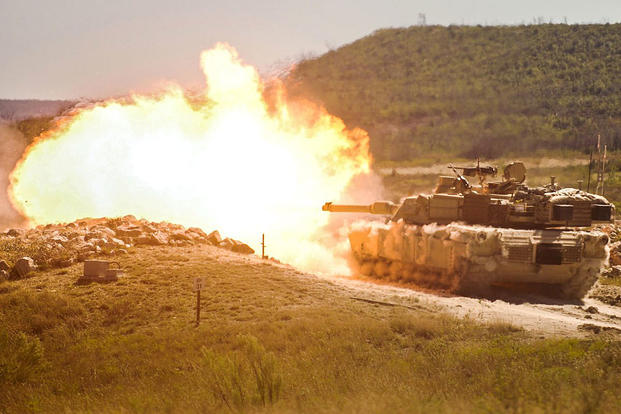The U.S. Army has announced it will convert one of its infantry brigades into an armored brigade combat team amid an increasing demand for heavier formations to counter Russian aggression in Europe.
Beginning this summer, the 4,200 soldiers from the 2nd IBCT of the 3rd Infantry Division at Fort Stewart, Georgia, will be converted into an ABCT and equipped with M1 Abrams tanks and Bradley fighting vehicles.
"The conversion of an IBCT to an ABCT better postures the Army to meet the defense strategic guidance by developing force structure capabilities to … retain overmatch in key warfighting functions," said Maj. Gen. Andrew Poppas, Army director of force management, in a recent Army press release.
The announcement comes two months after the service announced that the 3rd Armored Brigade Combat Team of the 4th Infantry Division, based at Fort Carson in Colorado, will deploy to Europe in January, beginning a continuous rotation of U.S.-based armored brigades to the region as part of the European Reassurance Initiative.
The conversion of the 2nd Infantry Brigade Combat Team -- scheduled to begin next summer -- will add more than 200 armored vehicles as it transitions to the Army's 10th active-duty armored BCT and the 15th in the entire force.
Once the conversion is complete, 2nd Brigade Combat Team, 3rd Infantry Division, will mirror its sister ABCT at Fort Stewart -- 1st Brigade Combat Team, 3rd Infantry Division -- which recently returned from deployment to Eastern Europe as part of Operation Atlantic Resolve.
Earlier this year, Defense Secretary Ash Carter told lawmakers that Russia, China, North Korea and Iran are among the evolving strategic challenges driving future planning and budgeting.
"The Army is pragmatically and proactively increasing the number of armored brigade combat teams in the force to address the several security challenges that have been identified by the secretary of defense," Col. Brian Ellis, force management division chief with the Army's G-3/5/7, said in an Army release.
If all goes as planned, the Spartan Brigade will convert to an armored BCT in October, begin training exercises in 2018 and conduct a combat training center rotation the following year, according to Ellis.
None of the brigade's units will be moved from Fort Stewart, and there will be just a slight reduction in its 4,200-soldier force as it changes to armored vehicles, he said.
The brigade is set to receive 87 M1A1 Abrams tanks with situational awareness configuration upgrades and 138 Bradley fighting vehicles, along with 18 M109 Paladin self-propelled howitzers.
"It benefits the Army in that it provides an additional rotational capability and it expands the armored brigade combat team capacity for the Army," Ellis said.
The service is moving ahead with the conversion despite gridlock in Congress over the defense budget that has been holding up Army plans to boost defenses against Russia in Europe.
The White House proposed quadrupling European Reassurance Initiative funding to $3.4 billion in the fiscal 2017 defense budget, but the recommendation stalled in late September when Congress passed a 10-week stopgap funding measure, called a continuing resolution, to avoid shutting down the government. The CR continued spending at fiscal 2016 levels.
A fully funded program would have helped support continuous troop rotations of U.S.-based armored brigade combat teams to the European theater in early 2017, which brings the total Army presence in Europe up to three fully manned Army brigades.
By the end of 2017, program funding would have paid for a continuous presence of three fully equipped Army brigade combat teams -- one armored, one airborne and one Stryker brigade -- as well as one pre-positioned set of combat-ready equipment sufficient to support another armored brigade combat team and division-level enablers in Europe.
-- Matthew Cox can be reached at matthew.cox@military.com.




























